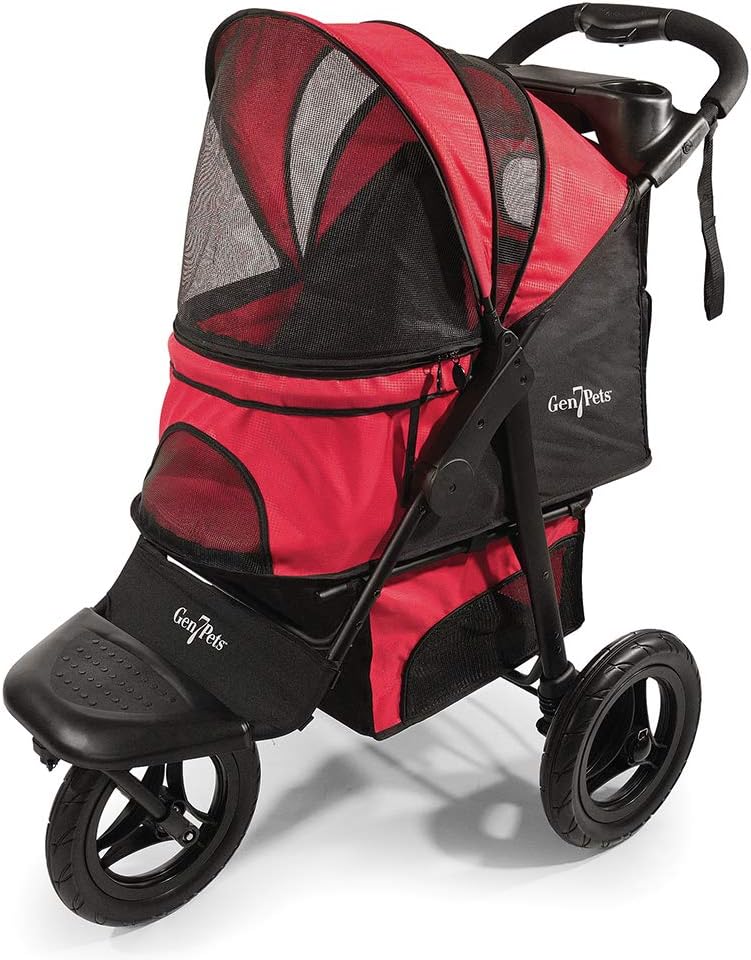How to Take Two Cats on a Plane? If you’re a proud cat owner planning a trip and wondering how to take your beloved feline companions on a plane journey with you, you’re in the right place. Traveling with pets can be a bit overwhelming, but with proper planning and preparation, it’s definitely doable. In this guide, we’ll walk you through the steps of flying with your two cats, ensuring their safety, comfort, and your peace of mind.
Top 5 Best Airline Approved Cat Carriers
| Product Name | Star /Rating | Learn more |
|---|---|---|
| Sherpa Travel Carrier | 4.7 / 11,238 | Learn more |
| Siivton Airline Approved Pet Carrier | 4.6 / 8,120 | Learn more |
| Henkelion Cat, Dog Carrier | 4.9 / 39,565 | Learn more |
| Prodigen Airline Approved Pet Carrier | 4.6 / 17, 829 | Learn more |
| Lollimeow Bubble Pet Carrier Backpack | 4.6 ‘/ 10,719 | Learn more |
Top 5 Best Airline Approved Pet Cargo Crates
| Product Name | Star / Rating | Learn more |
|---|---|---|
| Petmate Sky Kennel | 4.7 / 6,636 | Learn more |
| Petmate Ultra Vari Dog Kennel | 4.4 / 7,657 | Learn more |
| Sport Pet Designs Plastic Kennels | 4.6 / 4,607 | Learn more |
| Petmate Vari Dog Kennel | 4.5 / 5,583 | Learn more |
| Petmate Two Door Crate | 4.5 / 1,560 | Learn more |
How to Take Two Cats on a Plane?
Check Airline Pet Policies
- Before booking your flight, research the pet policies of different airlines. Some airlines allow cats in the cabin, while others may require them to travel as checked baggage.
- Be aware of any size or breed restrictions and the associated fees. Different airlines have different rules and fees for traveling with pets.
- Some airlines allow you to bring two cats in one carrier, as long as they are small enough to fit under the seat in front of you and they are comfortable with each other.
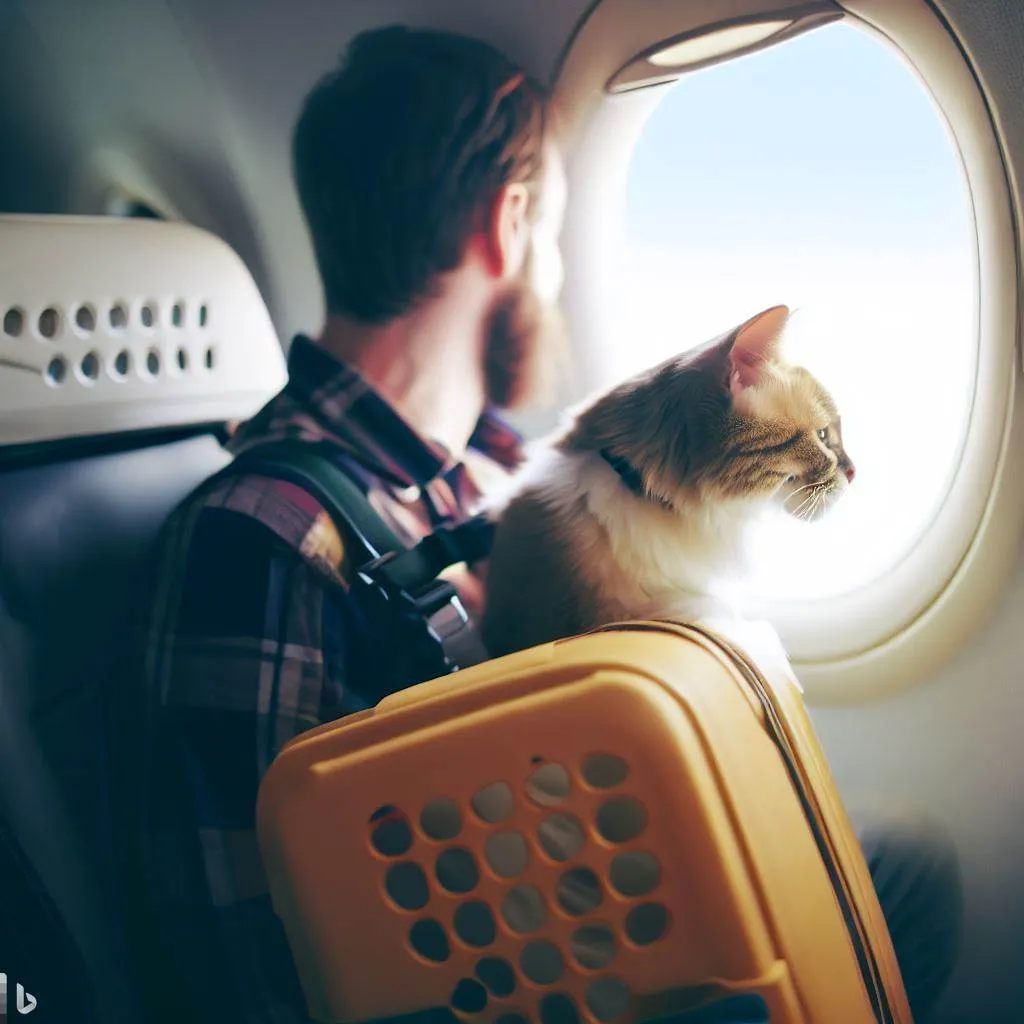
- Other airlines require you to bring two separate carriers, one for each cat. You might need to book an extra seat or pay an extra fee for the second carrier.
- Some airlines also limit the number of pets allowed in the cabin per flight, so make sure you book your tickets early and inform the airline that you are traveling with two cats.
Visit the Veterinarian
- Schedule a visit to the veterinarian to ensure your cats are in good health for travel. Obtain necessary documentation, including a health certificate, vaccination records, and any medications your cats require during the trip.
- Most airlines and destinations require you to have a health certificate from your vet that states that your cats are healthy and free of any contagious diseases.
- The certificate should be issued within 10 days of your departure date. You might also need to show proof of your cats’ vaccinations, especially for rabies.
- Check the requirements of your destination country or state, as they might have different regulations for importing pets.
Acclimate Your Cats to Carriers
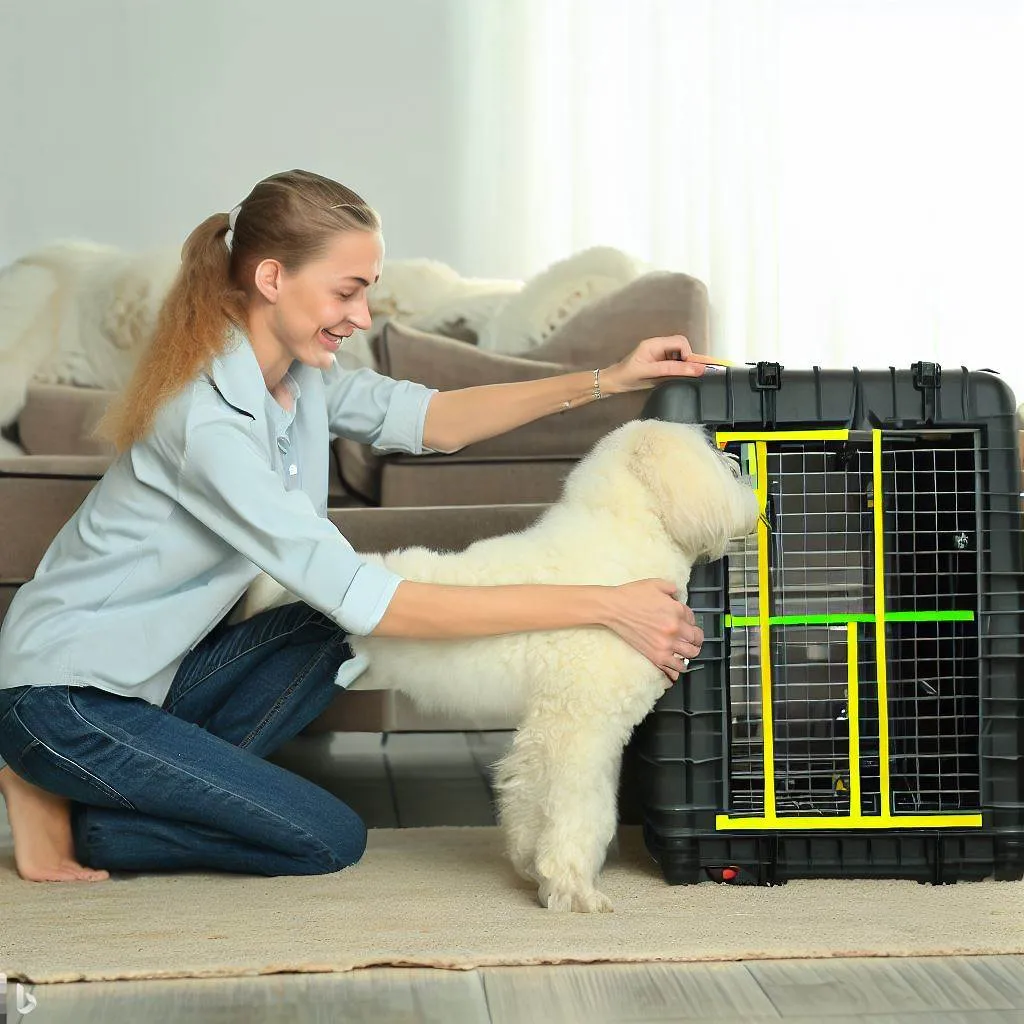
- Help your cats become comfortable with their carriers by placing them in the carriers for short periods, gradually increasing the duration. Offer treats and positive reinforcement to create a positive association.
- Prepare your cats for the flight. To make your cats more comfortable and less anxious during the flight, you should acclimate them to the carrier and the airport environment beforehand.
- A few weeks before your trip, let your cats explore and sleep in the carrier at home. You can also take them on short car rides or visits to the vet in the carrier to get them used to being inside it.
- You can also spray some Feliway or other calming pheromones inside the carrier to reduce stress. You can also put some familiar toys, blankets, or treats inside the carrier to make them feel more at home.
- On the day of your flight, feed your cats a light meal a few hours before departure and make sure they have access to water.
Guidelines for Airline Pet Cargo Crate Specifications
Choose a suitable carrier or carriers for your cats
- Depending on the airline’s policy, you might need to get one or two carriers for your cats. The carrier should be large enough for your cat to stand up, turn around, and lie down comfortably, but small enough to fit under the seat in front of you.
- The carrier should also have proper ventilation, a secure door, and a leak-proof bottom. You can choose between hard-sided or soft-sided carriers,
- depending on your preference and the airline’s approval. Some soft-sided carriers are designed to be collapsible or expandable, which can save space and provide more room for your cats.
Air Travel Crate Necessities for Pets
- The stipulations encompassing the endorsed categories of containers designed for the conveyance of cats, dogs, ferrets, and avian companions, either within the cabin or as cargo, have been authored by the International Air Transport Association (IATA).
- Largely, these guidelines have garnered acceptance across the spectrum of international airlines. To access the specific mandates of individual carriers, peruse our dedicated repository of airline pet policies.
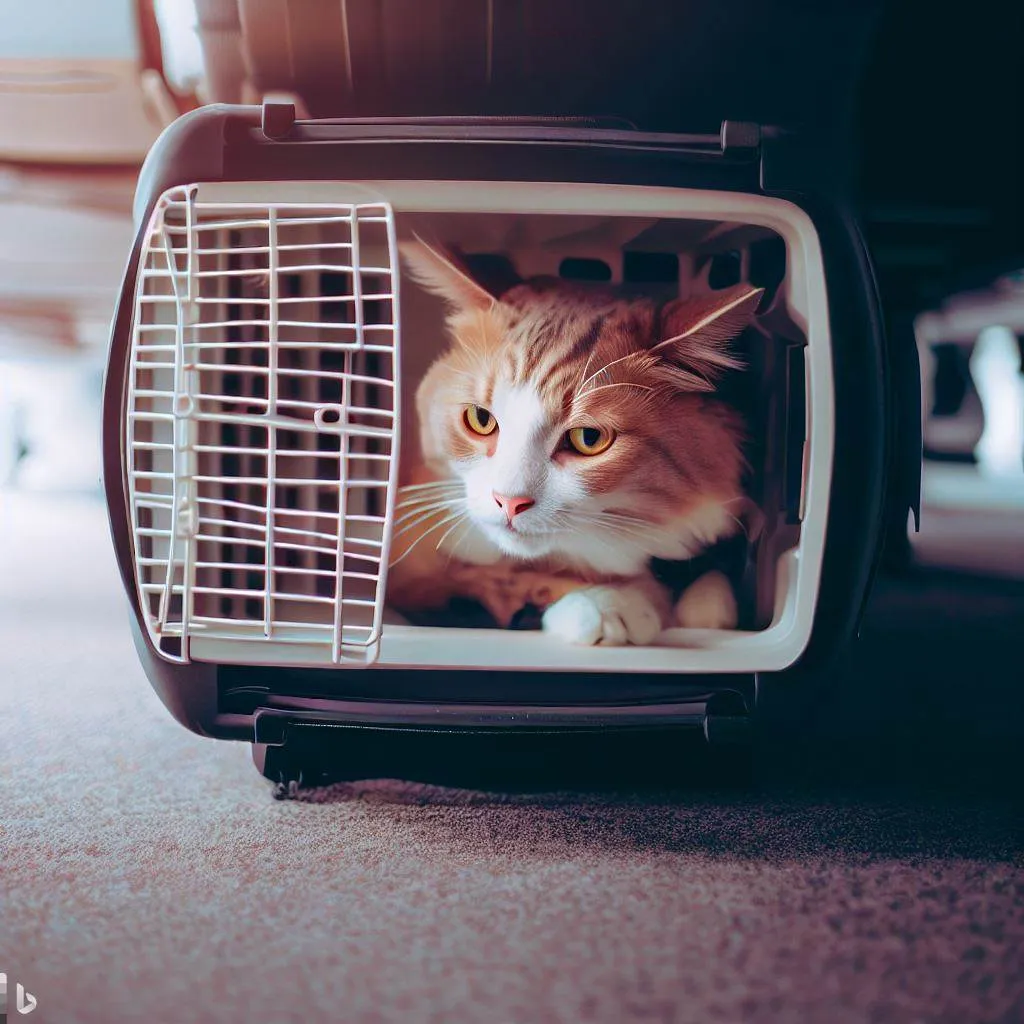
- Conveyance of Pets via Cargo Irrespective of whether your pet traverses as checked baggage or cargo, its sojourn is confined within a climate-controlled, pressurized compartment situated directly beneath the cabin.
- Carriers piloting larger aircraft, barring commuter planes, entertain animals as cargo, extending tailored accommodations for their care. A few exceptions encompass Southwest, AirTran, JetBlue, Frontier, and Virgin America, alongside those airlines that exclude pet accommodation within cargo holds.
- Criterions for Cargo Crates Catering to Pets Pet transportation entails adherence to IATA-mandated regulations governing crate dimensions, coupled with additional prerequisites contingent upon airline policy. While the ideal scenario involves accommodating one pet per container.
- The IATA regulations make allowance for the co-habitation of two animals in a single enclosure, under the caveat that their combined weight remains below 14 kg (30 lbs) and they share the same species, ensuring compatibility.
- Airlines, at their discretion, retain the autonomy to establish supplementary criteria, a prerogative exercised by the majority.
Choose the Right Carrier
Among the recommended pet crates, those engineered by Petmate stand out for satisfying the entirety of the stipulated requisites for pets embarking on journeys as cargo or checked baggage. These crates not only align with aviation standards but also distinguish themselves as one of the most secure and robust cargo containers available in the market today.
- Foundational Cargo Crate Criteria The confines of your pet’s container necessitate dimensions conducive to standing, turning, and reclining in comfort.
- In the context of brachycephalic breeds (snub-nosed), dimensions may surpass the norm for airlines permitting their cargo transport, as a precaution.
- The structural composition of crates extends to fiberglass, metal, rigid plastics, weld metal mesh, solid wood, or plywood. Notably, not all airlines endorse crates fashioned from wood, exemplified by the practices of Air France and KLM.
The floor mandates solidity and impermeability
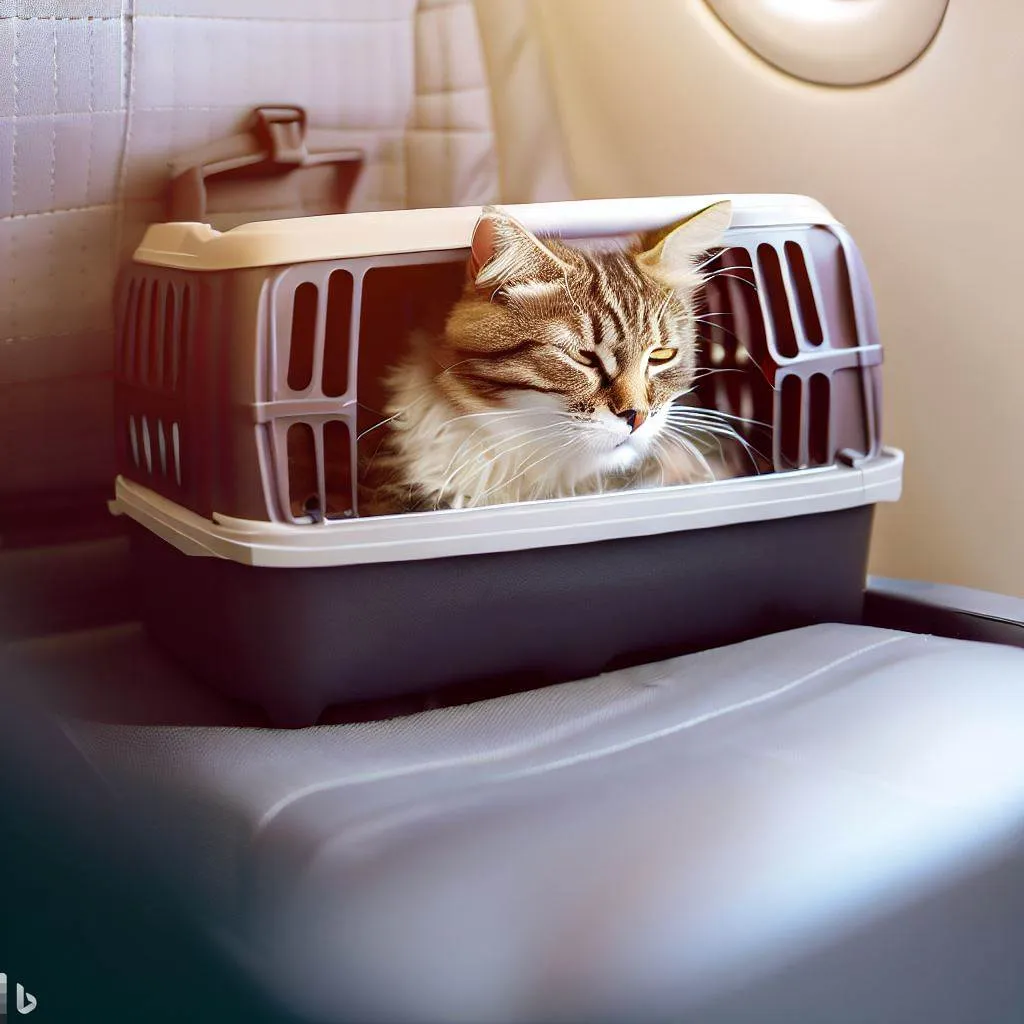
- Handles or handling space bars, integral to manipulation, adorn the longitudinal (depth) flank of the crate. The portal demands a secure, spring-loaded, comprehensive locking mechanism equipped with pins extending at least 1.6 cm (5/8 in) beyond the upper and lower horizontal projections above and beneath the door. Many airlines additionally stipulate the use of cable ties at each corner for enhanced security.
- The door structure ought to encompass robust plastic, welded or cast metal, withstanding any attempts at deformation by pets. (Our preference leans towards metal.) Additionally, the door mechanism should be designed to preclude any possibility of injury to the pet’s nose or paws. The crate’s construction should underscore sturdiness, free from collapsibility.
- The roofing demands solidity while permitting ventilation, provided such provisions do not compromise structural integrity. (Cages featuring roof doors are noncompliant with IATA and airline regulations.) Hardware for Cargo Crate, a non-IATA requirement, is increasingly embracing steel over plastic fasteners. Our counsel espouses the usage of steel hardware for pet crates to preclude potential complications.
- Additionally, numerous airlines stipulate the use of cable ties affixed at the corners of the crate, as opposed to plastic clips. All components of hardware, including fasteners, must be securely affixed. Two feeding and watering bowls should attach to the inner side of the crate’s front door, with provisions for refilling from outside without necessitating door opening. Attaching small funnels to water bowls via cable ties expedites refills by airport staff. Food can be affixed to the crate’s upper section within a plastic bag.
- Ventilation mandates presence on a minimum of three sides (domestic flights) and four sides (international flights). The openings must encompass a minimum of 1 inch (2.5 cm) over the upper two-thirds of the opposing terminus and the remaining two sides, positioned at a distance of 4 inches (10 cm) center to center for each aperture. The total ventilated area should constitute at least 16% of the combined surface area of the four sides.
- Supplementary perforations on the roof or sides are permissible, provided they exert no impact on crate robustness. These ventilation orifices must not be obstructed or sealed in any manner. Designation of “LIVE ANIMAL” labels on the crate’s upper and lateral facets in characters no less than one inch in height, in conjunction with directional indicators, is obligatory. A “Shipper’s Declaration” label, situated atop the crate, detailing the last instance of feeding and watering for the pet, assumes equal importance.
- This suite of labels forms part of our Accessory Kits. Elimination of wheels is requisite. If the crate is wheeled, the wheels should either be removed or secured with tape to avert any rolling. The crate necessitates conspicuous identification via your pet’s appellation and your contact details. An effective method entails attaching a label outside the crate, utilizing duct tape or comparable sturdy material.
- When the pet’s weight exceeds 132 lbs. (60 kg), inclusion of forklift spacers is imperative. Further Crate Recommendations Secure a leash and collar to the crate’s exterior, enclosed within a plastic bag and affixed with tape. Display your pet’s name prominently on the crate’s exterior, accompanied by the owner’s name, address, and cellular contact number.
- Incorporate a pet pad or shredded newspaper, mandated by several airlines. Integrate an unwashed t-shirt imbued with your scent, a source of solace for your pet. Affix the original health certificate, along with any other mandatory documents stipulated by the destination country, to the crate’s top within a Zip-lock plastic bag labeled “DO NOT REMOVE! ORIGINAL DOCUMENTS.” Exclude rigid toys or objects from the crate that could trigger injurious repercussions from bouncing.
- Calibrating Your Pet Crate’s Dimensions The measurement of your pet assumes paramount significance when ascertaining the aptly sized pet crate, a determination that could impact its acceptance or denial by the respective airline. Reference the ensuing chart for domestic flights to measure your pet accurately. Comprehensive international parameters are furnished subsequently. Align your findings with the crate’s interior measurements.
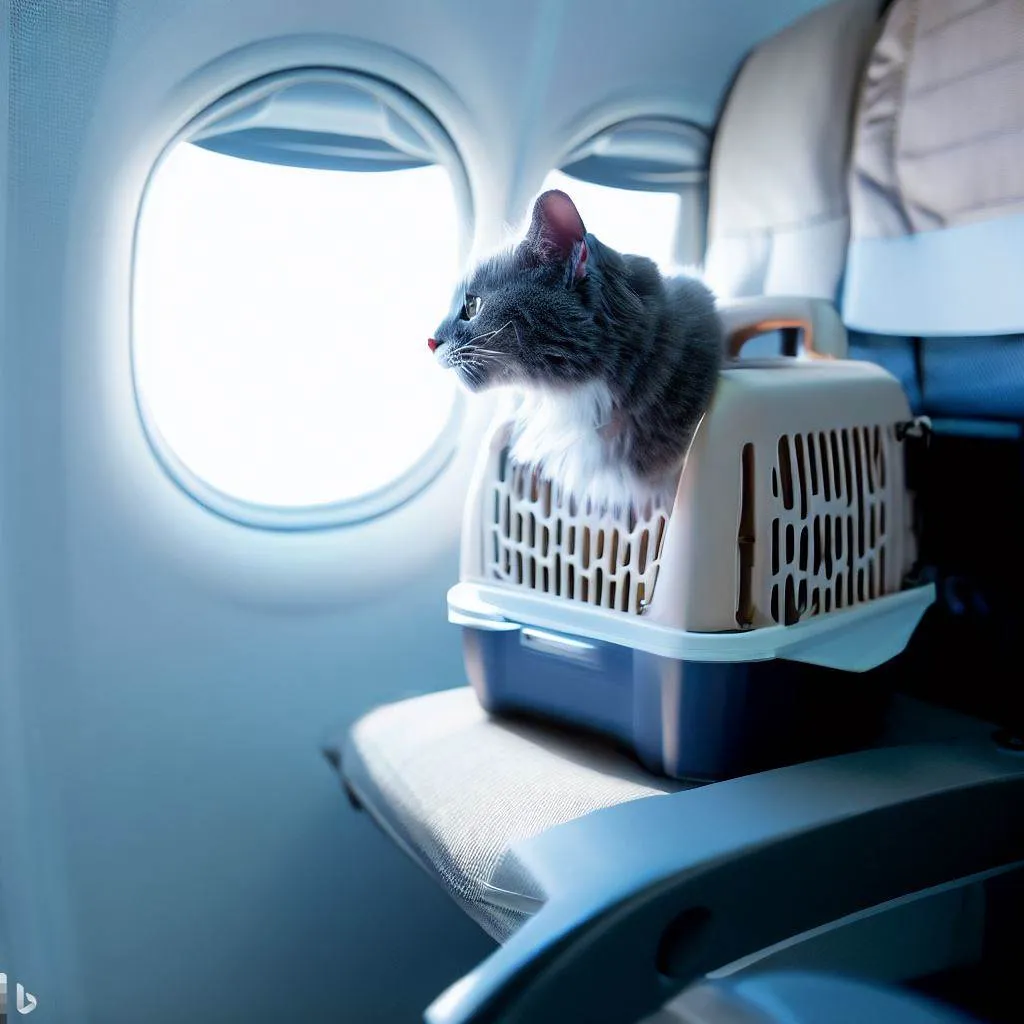
Measuring Your Pet for Its Cargo Crate
A = distance from nose to tail’s base B = height from ground to elbow joint C = breadth at the widest part (usually the shoulders) D = height of the pet in upright posture, inclusive of the pet pad (top of head for non-erect-eared pets, tip of ears for erect-eared pets) ADDITIONAL REQUIREMENT: Incorporate pad or bedding depth
The crate’s length should equal A + 1/2 B. The crate’s width should equal C x 2 The crate’s height (flat or arched top) should equal D.
Worth noting is the specific international requirement mandated by certain airlines, such as United Airlines:
The crate’s length should equal A + B. The crate’s width should equal (C+1) x 2 The crate’s height (flat or arched top) should equal D + 3″.



